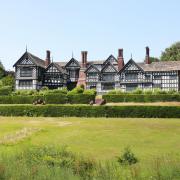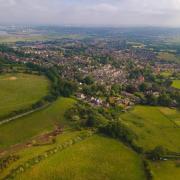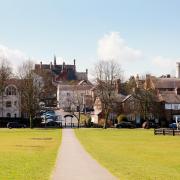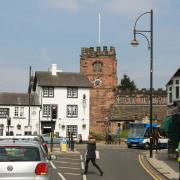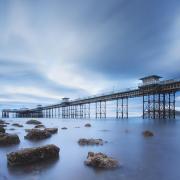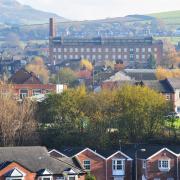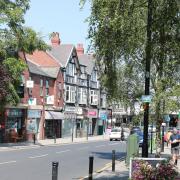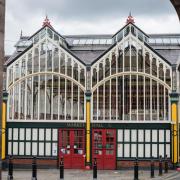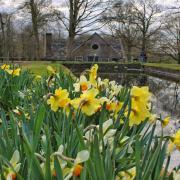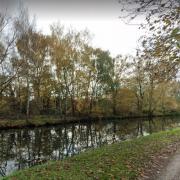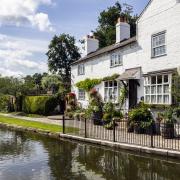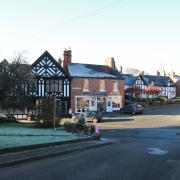Northwich’s untold story of terracotta is having its time in the spotlight thanks to special projects within the town, as Rebekka O’Grady discovers.

Liverpool may be hosting some impressive terracotta pieces from China, but in Northwich, people are celebrating something much closer to home. From May 1st to July 15th, an exhibition at the Lion Salt Works will be exploring the mystery behind a magnificent terracotta altarpiece – which will hopefully intrigue visitors to know more about the town’s historical connection with the production of terracotta.
‘Not many people know this, but millions of terracotta bricks were made in Northwich,’ said David North, one of the organisers of the exhibition. ‘The town is famous for salt mining and ship building, but it also had a thriving terracotta brick making company in the late 1800s led by Jabez Thompson. Jabez managed and owned the brickworks and was a member of the same Thompson family who owned the Lion Salt Works for six generations.’
Many of the buildings in Northwich town centre are either decorated in terracotta ornamentation or are crafted from the red bricks – made from fairly specialised high iron content clay. However the focus within the Lion Salt Work’s exhibition is a fascinating altarpiece which can be found in St Michael & All Angels Anglican Church in Little Leigh.
Known as a ‘reredos’, the piece was produced by the Northwich manufacturer and is based on Leonardo Da Vinci’s painting, The Last Supper.

‘Alongside producing bricks, Jabez’s company also made incredible artworks in terracotta, one of which is the alterpiece in Little Leigh,’ said David, a resident of the village located three miles from Northwich. ‘My wife and I married in that church, so I am very familiar with the reredos, but many people don’t even know it’s there. It’s made from a very high quality moulding, unequal to anything else I’ve seen. It caught my eye straight away.’
David, an artist and former architect, along with other residents took it upon themselves to raise the profile of the piece and the idea for the exhibition was launched. With the help of local historian and researcher, Alexander Boulton, the group have been delving into its past.
‘The more you look into things, the more you realise you don’t actually know! Whichever craftsman created this sculpture was a master of his trade and clearly proud of the town’s salt history by including the significant detail of Judas and the ‘spilt’ salt. There is still a lot to learn about the reredos and we hope this exhibition will unlock some lost mysteries, as well as raise awareness to go on to later raise funds to help restore some pieces. It’s a long term plan.’
Alongside photographs and storyboards explaining the history of terracotta in the town, there will be talks and even a moulding day, where visitors can make their own terracotta angel. Little Leigh Church will be open on Saturdays during the exhibition with volunteers on site to talk about the alterpiece.

As well as exploring the Northwich’s terracotta past, another project is looking to its future and protecting these buildings. Northwich Townscape Heritage Project is working to repair and improve traditional timber-framed buildings in Witton Street and High Street – many of which have terracotta detailing. With funding from the Heritage Lottery, plus contributions from Cheshire West and Chester Council and the Business Improvement District, some buildings will be restored to their Victorian appearance.
‘We are walking on history all the time. The buildings here are unique due to Northwich being a salt mining town; virtually everyone living there then was involved in the trade. There was so much mining that the buildings sank as there were no foundations underneath,’ said Sue Wakeford, a Townscape Heritage officer for Northwich. The ‘wonky’ buildings were a huge tourist attraction during the Victorian period, and with photography becoming popular the sinking houses were well-documented.
‘In the late 1890s a by-law was passed to build specific timber-framed houses with brick panelling and timber or later steel ring beams, which enabled the building to be jacked up and moved. A new foundation was built underneath and roads then created to meet the new level.’
At the start of 2018, a call was put out to recruit specialised craftsmen to help with the restoration. Some of the work has begun, with the next on-site phase taking place in May. The aim is to change some of the shop fronts back to a Victorian style. Many buildings in the project are small, independently run, so there is a limit to what can be done, but Sue said you can see spectacular detail.

‘Some of the buildings are adorned with terracotta, stone work, raised plasterwork and even carved timber heads and animals. There is plenty of ornate detail within the building, showing that a lot of work has gone into them and whoever did it was a real craftsman,’ said Sue, who commented that the call-out has generated a lot of interest. ‘I hope that in conjunction with the exhibition at the Lion Salt Works, we get people inspired and interested.’
Sue is hoping that with the town’s terracotta trade now being in the spotlight, some fascinating tales about locals who were involved in the brickworks might arise. At the moment, it is a mystery as to who was involved within Jabez Thompon’s company, and the Townscape Heritage project is keen to hear from those who may know more.
‘Not many people now talk about this high quality, phenomenal trade. Families living in Northwich often go back many generations, so there may be someone’s great-grandfather who worked there. It would be wonderful to hear any stories people may have about family members. It’s a largely untold story which has such a strong heritage within the town.’





